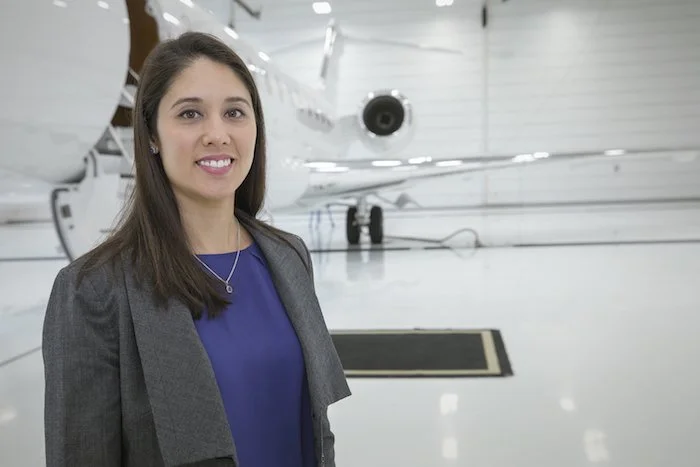Connectivity and Bombardier’s ‘connected aircraft’ vision
Onboard connectivity in business aviation has evolved rapidly over the last decade. In 2017, an industry study found that over 96 per cent of business aviation users accessed cabin connectivity for email, while just 13.6 per cent used it for streaming video. Today, it’s a totally different story. Video is king and streaming is a must.
In fact, a non-functioning internet connection is often reason to ground an aircraft.
As the leading business jet manufacturer, Bombardier has long realized that connectivity is integral to the aircraft ownership experience. Moreover, there is no “one size fits all” solution, because each customer’s needs are unique.
Connectivity and Connected Aircraft
While “connectivity” in business aviation is largely about how pilots and passengers communicate with the world, that concept is intertwined with what Bombardier refers to as the “connected aircraft.”
Elza Brunelle-Yeung, Bombardier’s Senior Director, Aftermarket Products & Digital, defined both.
“From a connectivity perspective, this is the more traditional concept pertaining to communication connectivity – so that includes cockpit and ATC communications, cabin and internet connectivity, TV, voice and data. This is normally attained through a satellite-based or ground-based system.”
The choice of system depends on the customer profile, considering where they will be flying and what support they will require. Bombardier offers the best and latest options, from satellite systems to air-to-ground services.
Brunelle-Yeung went on to explain how Bombardier’s “connected aircraft” vision takes things a step further, linking the entire aircraft, from nose to tail, with next-generation technology analogous to the Internet of Things (IoT) – a network of linked devices that collects and processes information from systems and sensors, making it readily available to customers.
“Here, Bombardier is bringing the whole aircraft into a mode where it becomes a smart aircraft,” said Brunelle-Yeung. “We are capturing and sensing things happening on the aircraft and transferring that data to our health management system, Smart Link Plus.”
Bombardier’s Smart Link Plus is an industry-leading innovation that offers a complete “back to birth” digital traceability of an aircraft’s history. Third-party endorsed as a key contributor to aircraft value, Smart Link Plus acquires all sorts of data from an aircraft and translates it into recommendations that improve operational efficiency.
The system is now standard equipment on all new production Challenger and Global aircraft, and it has been certified for all in-service aircraft of those types. Tangible benefits of Smart Link Plus include real-time aircraft performance monitoring, remote troubleshooting, and live OEM data and support. Brunelle-Yeung said the thousands of data points generated by an aircraft can help predict when trouble could arise.
The connected aircraft concept is further supported by Bombardier’s growing digital ecosystem, accessed through the myBombardier Customer Portal. Here, users can access online parts ordering, technical publications, myMaintenance, and other OEM and related third-party apps.
“We are bringing together information and replacing manual references and entries with digital alternatives,” concluded Brunelle-Yeung. “From a digital ecosystem perspective, as the OEM we have the ability to connect different entities together, saving clients time.”

